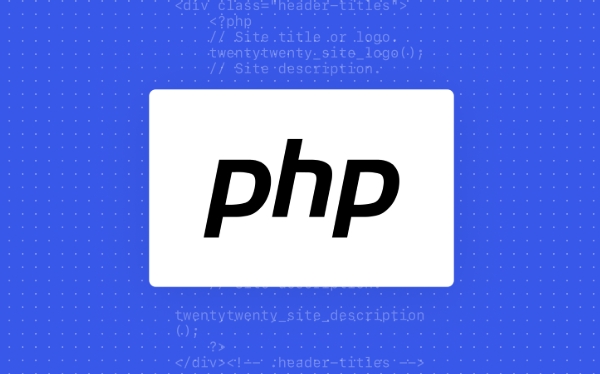The header('Location: ...') with PHP failed to jump with parameters or lost parameters. The common reasons and solutions are as follows: 1. The URL encoding is incorrect. http_build_query() should be used to automatically handle parameter encoding to avoid manual splicing causing special characters to destroy the URL structure; 2. There is output content before header(), and it is necessary to ensure that there is no output (including spaces, BOM headers, echo, etc.) before calling header(). You can use ob_start() to enable output buffering to temporarily solve it; 3. The browser cache or plug-in interferes with the jump behavior. It is recommended to clear the cache, use incognito mode to test, or add random parameters to the URL to force refresh. Just pay attention to the above three points to effectively solve most jump problems.

When using PHP's header('Location: ...') redirection, if the GET parameter is brought but it cannot jump normally or the parameters are lost, this problem is actually quite common. Usually it is not caused by the grammatical error, but by the improper details.

The URL encoding is incorrect
The most common problem is that the parameters are not coded correctly. If you manually splice the URL but contain special characters (such as spaces, Chinese, &, etc.), it will destroy the URL structure and cause the server to parse it.
?Solution:

- Use
http_build_query()to build a query string, which will automatically handle the encoding for you.
$params = ['name' => 'John Doe', 'city' => 'New York']; $url = 'target.php?' . http_build_query($params); header('Location: ' . $url); exit;
The URL generated in this way is:
target.php?name=John Doe&city=New York
There will be no garbled or cut-off.

header() has output before
header() function of PHP must be called before any actual content is output, otherwise an error will be reported: "Cannot modify header information - headers already sent".
??Common reasons:
- There is
echo,printorvar_dumpin front of it - There are blank characters or BOM headers before the beginning of the file
- Contains other files, and that file has output
? Troubleshooting suggestions:
- Check if there are spaces before
<?phpor line breaks - Don't have any output before calling
header() - Use
ob_start()to enable output buffering to temporarily avoid this problem
Browser cache or plug-in interference
Sometimes you obviously change the code but refresh the page but there is no change. It may be that the browser caches the jump behavior. Especially the 301 jump will be cached for a long time.
? Countermeasures:
- Try clearing the browser cache, or test it in incognito mode
- Use the developer tools to view the Network panel to confirm whether a new request has been executed
- If it is a test environment, you can use different URL parameters to force refresh (for example, add a random number)
header('Location: target.php?time=' . time());
Although not a long-term solution, it is very useful when debugging.
Summarize the prone to problems
- Not using
http_build_query()when splicing URLs results in error in parameter format - I accidentally outputted the content before
header() - Browser cache makes the jump look "not effective"
These issues are not complicated, but are easily overlooked. As long as you pay attention to the encoding and output order, most cases can be solved.
Basically that's it.
The above is the detailed content of PHP header location with GET parameters not working. For more information, please follow other related articles on the PHP Chinese website!

Hot AI Tools

Undress AI Tool
Undress images for free

Undresser.AI Undress
AI-powered app for creating realistic nude photos

AI Clothes Remover
Online AI tool for removing clothes from photos.

Clothoff.io
AI clothes remover

Video Face Swap
Swap faces in any video effortlessly with our completely free AI face swap tool!

Hot Article

Hot Tools

Notepad++7.3.1
Easy-to-use and free code editor

SublimeText3 Chinese version
Chinese version, very easy to use

Zend Studio 13.0.1
Powerful PHP integrated development environment

Dreamweaver CS6
Visual web development tools

SublimeText3 Mac version
God-level code editing software (SublimeText3)
 PHP Variable Scope Explained
Jul 17, 2025 am 04:16 AM
PHP Variable Scope Explained
Jul 17, 2025 am 04:16 AM
Common problems and solutions for PHP variable scope include: 1. The global variable cannot be accessed within the function, and it needs to be passed in using the global keyword or parameter; 2. The static variable is declared with static, and it is only initialized once and the value is maintained between multiple calls; 3. Hyperglobal variables such as $_GET and $_POST can be used directly in any scope, but you need to pay attention to safe filtering; 4. Anonymous functions need to introduce parent scope variables through the use keyword, and when modifying external variables, you need to pass a reference. Mastering these rules can help avoid errors and improve code stability.
 How to handle File Uploads securely in PHP?
Jul 08, 2025 am 02:37 AM
How to handle File Uploads securely in PHP?
Jul 08, 2025 am 02:37 AM
To safely handle PHP file uploads, you need to verify the source and type, control the file name and path, set server restrictions, and process media files twice. 1. Verify the upload source to prevent CSRF through token and detect the real MIME type through finfo_file using whitelist control; 2. Rename the file to a random string and determine the extension to store it in a non-Web directory according to the detection type; 3. PHP configuration limits the upload size and temporary directory Nginx/Apache prohibits access to the upload directory; 4. The GD library resaves the pictures to clear potential malicious data.
 Commenting Out Code in PHP
Jul 18, 2025 am 04:57 AM
Commenting Out Code in PHP
Jul 18, 2025 am 04:57 AM
There are three common methods for PHP comment code: 1. Use // or # to block one line of code, and it is recommended to use //; 2. Use /.../ to wrap code blocks with multiple lines, which cannot be nested but can be crossed; 3. Combination skills comments such as using /if(){}/ to control logic blocks, or to improve efficiency with editor shortcut keys, you should pay attention to closing symbols and avoid nesting when using them.
 How Do Generators Work in PHP?
Jul 11, 2025 am 03:12 AM
How Do Generators Work in PHP?
Jul 11, 2025 am 03:12 AM
AgeneratorinPHPisamemory-efficientwaytoiterateoverlargedatasetsbyyieldingvaluesoneatatimeinsteadofreturningthemallatonce.1.Generatorsusetheyieldkeywordtoproducevaluesondemand,reducingmemoryusage.2.Theyareusefulforhandlingbigloops,readinglargefiles,or
 Tips for Writing PHP Comments
Jul 18, 2025 am 04:51 AM
Tips for Writing PHP Comments
Jul 18, 2025 am 04:51 AM
The key to writing PHP comments is to clarify the purpose and specifications. Comments should explain "why" rather than "what was done", avoiding redundancy or too simplicity. 1. Use a unified format, such as docblock (/*/) for class and method descriptions to improve readability and tool compatibility; 2. Emphasize the reasons behind the logic, such as why JS jumps need to be output manually; 3. Add an overview description before complex code, describe the process in steps, and help understand the overall idea; 4. Use TODO and FIXME rationally to mark to-do items and problems to facilitate subsequent tracking and collaboration. Good annotations can reduce communication costs and improve code maintenance efficiency.
 How to access a character in a string by index in PHP
Jul 12, 2025 am 03:15 AM
How to access a character in a string by index in PHP
Jul 12, 2025 am 03:15 AM
In PHP, you can use square brackets or curly braces to obtain string specific index characters, but square brackets are recommended; the index starts from 0, and the access outside the range returns a null value and cannot be assigned a value; mb_substr is required to handle multi-byte characters. For example: $str="hello";echo$str[0]; output h; and Chinese characters such as mb_substr($str,1,1) need to obtain the correct result; in actual applications, the length of the string should be checked before looping, dynamic strings need to be verified for validity, and multilingual projects recommend using multi-byte security functions uniformly.
 Quick PHP Installation Tutorial
Jul 18, 2025 am 04:52 AM
Quick PHP Installation Tutorial
Jul 18, 2025 am 04:52 AM
ToinstallPHPquickly,useXAMPPonWindowsorHomebrewonmacOS.1.OnWindows,downloadandinstallXAMPP,selectcomponents,startApache,andplacefilesinhtdocs.2.Alternatively,manuallyinstallPHPfromphp.netandsetupaserverlikeApache.3.OnmacOS,installHomebrew,thenrun'bre
 Learning PHP: A Beginner's Guide
Jul 18, 2025 am 04:54 AM
Learning PHP: A Beginner's Guide
Jul 18, 2025 am 04:54 AM
TolearnPHPeffectively,startbysettingupalocalserverenvironmentusingtoolslikeXAMPPandacodeeditorlikeVSCode.1)InstallXAMPPforApache,MySQL,andPHP.2)Useacodeeditorforsyntaxsupport.3)TestyoursetupwithasimplePHPfile.Next,learnPHPbasicsincludingvariables,ech






